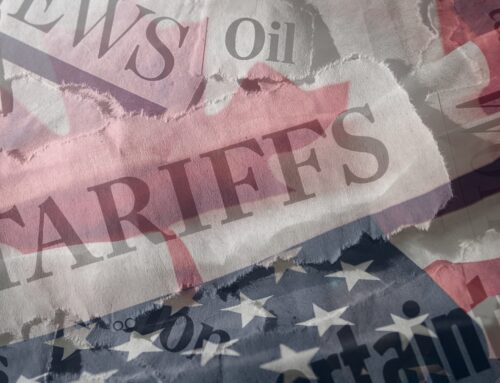3 Types of Pricing Strategies for Inflationary Environments
Paul Hunt, TEC Chair and founder of Pricing Solutions, a consulting firm dedicated to helping clients achieve substantial growth in market share and profits, offers guidance to navigating this inflationary environment through various pricing strategies.
In Paul Hunt’s webinar, Strategies for Pricing in an Inflationary Environment, he states that consumers have price increase fatigue. Since inflation began in 2022, and without an equal increase in wages, demand could start to slow as people tire of seeing price increases and their budgets start to tighten.
Canadian business leaders can succeed with resources like access to thought leadership, mentors, a global network, and non-competitive peer groups, all part of a TEC membership. In this article, we explore and define pricing strategies recommended by Hunt, to help businesses thrive amidst inflationary pressures.

1. Value-Based Price Increase
“Most companies still need a 5%+ price increase (as of 2023) to offset past shortfalls and continued inflationary costs.”
Customers purchase products based on value; therefore, price and value are inherently connected. The price must reflect the value, so arbitrary price increases that do not align with value will not resonate with consumers and could result in a decrease in sales.
There are ways to show value through creative pricing strategies. For example, an airplane tire company, a client of Hunt’s consulting firm, used a pricing model that charged per landing rather than per tire, a novel strategy in their industry. This allowed them to uncover the value in their price, increase sales volume, and continue maximizing profits.
Other ways to articulate value include using signifiers that separate yourself from the competition. For example, people may be willing to pay a premium if your product is locally sourced. If so, it is important to label your product accordingly; otherwise, it looks the same as the competition and the price increase will not align with the value.
This pricing method is often found in food and beverage industries where organic ingredients signify an increase in value and will therefore have a premium price. This marketing strategy is also effective for reaching your target customers, as they will likely be looking for signifiers that reflect their values, even if it does come at a higher price.

2. Consumer Habits and the Rounding Rule
Another competitive pricing strategy that can help you determine the price of a product is the rounding rule. Rather than pricing your products and services with target margin pricing—marking up to reach a chosen percentage margin after cost— consider consumer habits in your pricing strategy. People read left to right, so $46 and $49 are both perceived as under $50. A service with a price point of $46 is potentially leaving money on the table and can apply the rounding rule to reach $49.
Another consumer behavior to be aware of is understanding the visibility of your goods or services in the eyes of the public. Some products are highly visible, and even the slightest increase will be noticed. Hunt suggests pricing to the penny on these products. On less visible products, one can maximize the rounding rule to help remain cash-flow positive.
“When you go up 5% across the board, you miss this completely.”
It’s important to understand the threshold of the pricing strategy for the clients you serve. If employed properly, with nuances depending on your customer base and products, the rounding rule can be a significant contributor to your top line. One of Hunt’s clients, a public company on the NYSE, increased revenue by $27 million with no changes other than rounding appropriately.
“If you’re in a business where you’re selling large projects, you need to think about it in terms of where is the threshold for the client, and you need to be able to communicate value within it.”

3. Waterfall Losses
Another area where businesses tend to see losses is in the extra costs in the waterfall. These are all the discounts, promotions, rebates, allowances, and payment terms that companies end up shouldering after a sale. In his experience, Hunt observes that even if a customer doesn’t pay for expedited shipping, a business will ship it with that extra cost anyway to make the customer feel valued.
Techniques to offset these waterfall costs could include having a minimum order requirement, adding a fuel surcharge, restructuring warranties, free trials, guarantees, and many other programs and initiatives that often go unnoticed. According to Hunt, businesses can likely find an extra 2-3% in the waterfall and it doesn’t appear to be a price increase.
For example, if a company were to decrease the warranty for its products from two years to one year, it would directly decrease the associated costs of having to reimburse, reproduce, re-ship new products, and related customer service expenses.
Conclusion
An inflationary environment is likely here to stay for the foreseeable future. It has made price increase announcements more palatable for customers, but it still requires intention and strategy to maximize upside potential. If done so haphazardly, you could end up disheartening your customers and turning them toward your competition. With strategies such as value-price increases, applying the rounding rule intentionally, and restructuring your waterfall expenses, you can avoid inflationary impacts on your organization and keep your head above water.
An inflationary environment is difficult to navigate for everyone, let alone business leaders who often face this challenge alone and feel a sense of responsibility toward their community and those they serve. Passing along costs to consumers isn’t always the best practice, which is why we recommend equipping yourself with expert advice and a community of business leaders who understand the challenges you face. For more in-depth information, watch Paul Hunt’s webinar on-demand!
At TEC, we value growth, trust, caring, and challenge, and believe that when one of us succeeds, we all succeed. This is why we encourage business leaders to embrace change, find strength in numbers, and be open to the new opportunities that you’ll find by joining one of our personalized, confidential, non-competitive peer groups. Join TEC now and become a better business and community leader!




